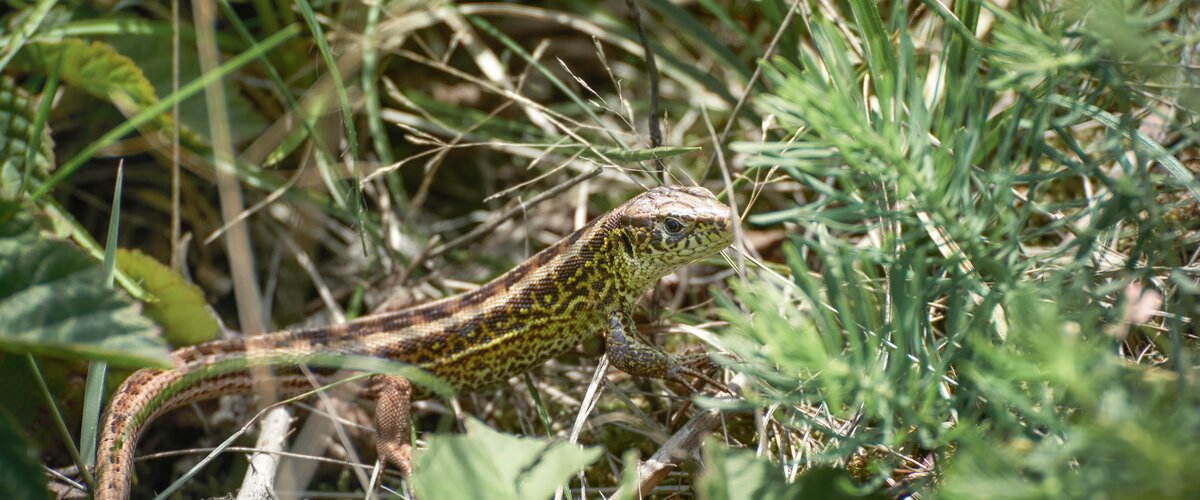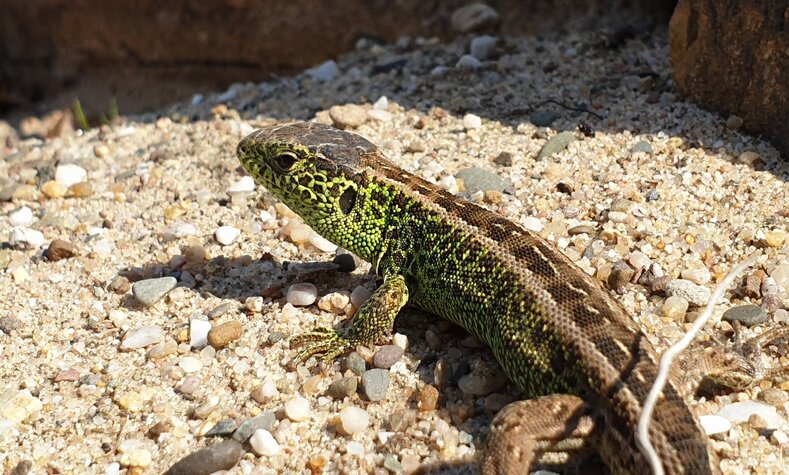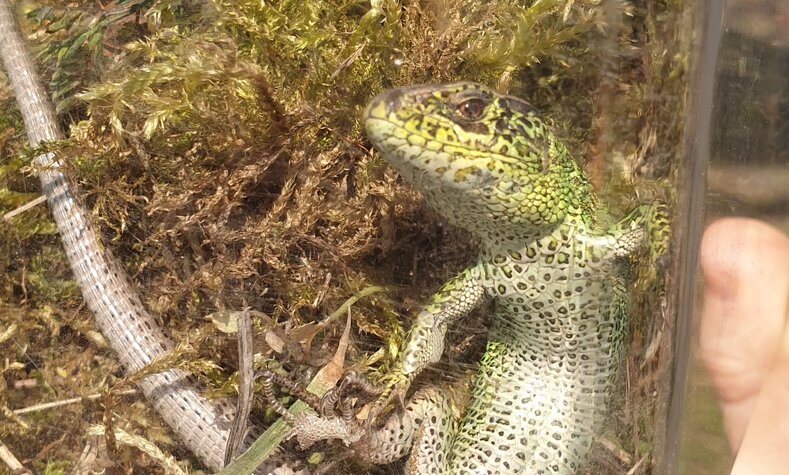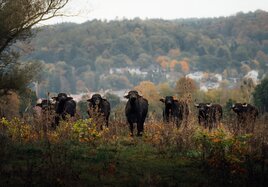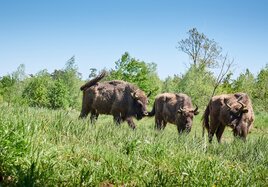Lizards like to lay their eggs in sunny locations and patches of sand, which is why they are particularly common along railway embankments. We make the effort to move them before we start building and maintenance work on the rail infrastructure.
Lizards' habitat in the Herzberge natural park
For example, we relocated a large number of protected sand lizards from the premises of the former classification yard and maintenance depot in Berlin-Schöneweide, as the 40-hectare site was developed for commercial purposes. The lizards have found a new home in the Herzberge Nature Park and in other natural areas.
Moving home for large construction projects
During our construction work for the major new Stuttgart-Ulm line, we also relocated around 100 sand lizards to old vineyards along the nearby river Murr or to temporary alternative habitats. In addition, we also relocated thousands of European wall lizards from the former Stuttgart-Untertürkheim freight yard to the nearby Feuerbacher Heide heath area where we have built numerous stone walls to serve as new homes for the animals.
New living spaces in Cologne-Zollstock
At our first climate-friendly ICE maintenance depot at Nippes in Cologne, we carefully removed 150 protected sand lizards from the site before construction of the facility began. The animals now live on some 17,000 square meters in the neighboring suburb of Zollstock.
Replacing habitats in Upper Lusatia
We have a put new roof over the heads of more than 3,500 lizards on the upgraded Knappenrode-Horka line in Upper Lusatia, setting up almost 45 substitute habitats for sand lizards and smooth snakes. They were all professionally resettled by reptile experts.
A new home along Leverkusen's S-Bahn lines
Due to construction work being completed between the suburban train stations in Leverkusen-Rheinsdorf and Langenfeld, we have relocated some 30 sand lizards. Gravel, sand and deadwood were used to build a suitable habitat for the lizards in close proximity to the rail line. A fence has been installed to separate the habitat from the construction site. When the construction project has been completed, the animals will be able to move back into their former home.
Research project for greater protection for reptiles
In a study that we conducted with the Museum für Naturkunde (Natural History Museum) in Berlin, we attached telemetry transmitters to about 80 lizards and monitored them for more than a year. By analyzing their movement data, we now have more precise knowledge of when and where the reptiles are on the tracks and how far their home ranges extend. In the morning, for instance, the lizards like to warm up on the stones of the track ballast. Rail operations pose no danger to the lizards. Crossing the tracks is not dangerous for the animals either, but they do this very rarely anyway. Starting in late July and early August, individual sand lizards were observed taking short trips, leaving the habitat on the track they had previously occupied and moving up to 100 meters into the adjacent forest or to the edge of the forest. The information gained from this previously unpublished study will help us to better protect the small reptiles during future construction projects.
